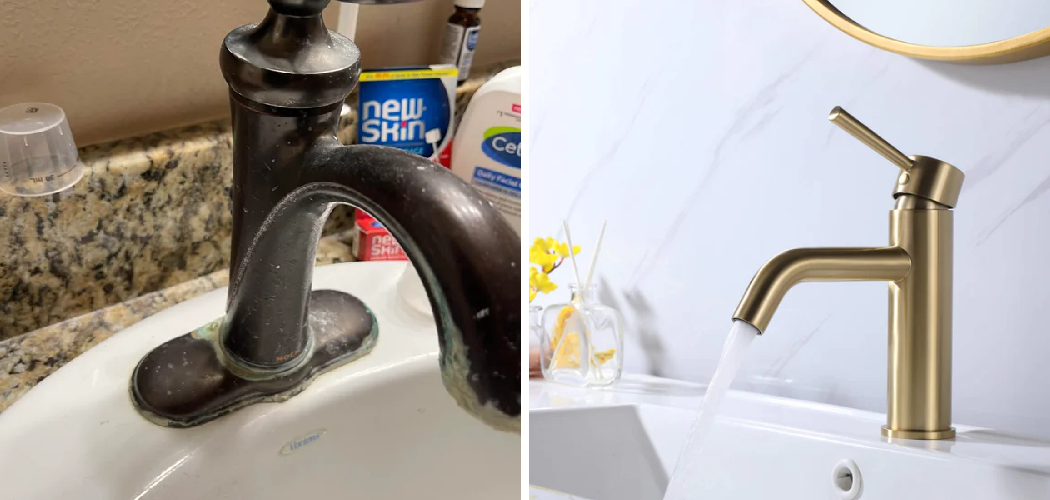Bronze faucet fixtures are a stunning addition to any home, offering a timeless and elegant aesthetic. However, they require proper care to maintain their beauty and functionality. Regular maintenance is crucial as it helps preserve their sheen, prevents unsightly corrosion, and significantly extends their lifespan. One of the unique features of bronze is its ability to develop a patina over time, which enhances its antique charm.
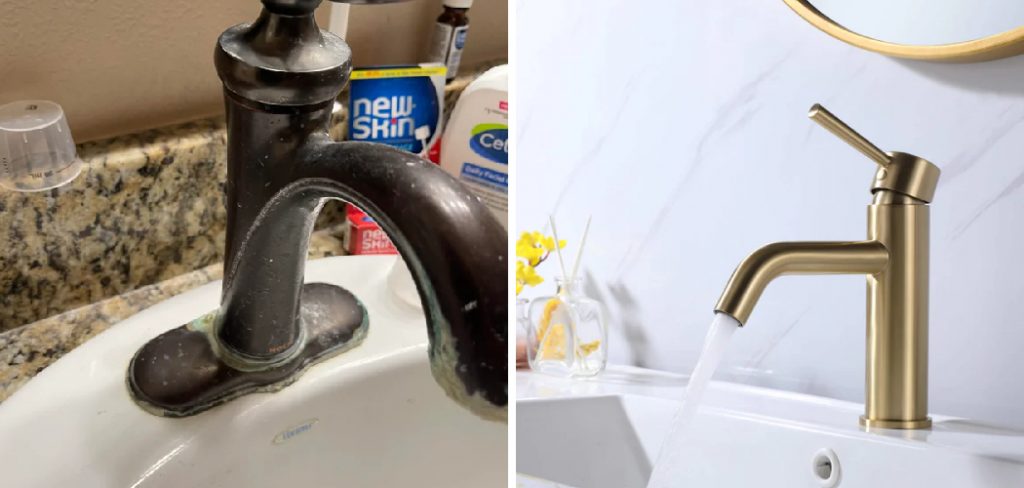
While this natural aging process is desirable for many, neglecting upkeep can lead to damage or discoloration. This article provides a step-by-step guide on how to clean bronze faucet fixtures gently and effectively while ensuring their finish remains intact. By following these practical tips, you can keep your bronze fixtures looking as exquisite as the day they were installed.
Understanding Bronze and Its Care Needs
Bronze is a durable and timeless material, known for its warm, rich appeal. However, proper care is essential to maintain its luster and prevent damage. A key factor in caring for bronze fixtures is understanding the different types of finishes and their unique requirements.
Types of Bronze Finishes
Bronze fixtures typically come in oil-rubbed and polished finishes. Oil-rubbed bronze has a darker, matte appearance and often develops highlights in areas that receive frequent use or cleaning. Polished bronze, on the other hand, boasts a shiny, reflective surface that requires gentle maintenance to preserve its brilliance. Each finish requires a slightly adjusted cleaning approach to ensure its integrity and beauty remain intact.
Natural Aging and Patina
One of bronze’s most distinguished traits is its ability to develop a patina over time. This natural aging process not only enhances the bronze’s character but also serves as a protective layer. Scrubbing too harshly or using inappropriate cleaners can strip away this patina, leaving the bronze vulnerable to tarnish and discoloration.
What to Avoid
When cleaning bronze, it’s crucial to avoid harsh chemical cleaners, abrasive sponges, or acidic substances like vinegar. These can damage the surface and compromise its finish. By understanding these nuances, you can ensure your bronze fixtures retain their elegance for years to come.
Materials and Tools Needed
Cleaning Materials
- Mild dish soap
- Warm water
- Soft microfiber cloths
- Soft-bristled toothbrush (for tight spots)
- Baking soda (for deeper cleaning if needed)
- Olive oil or wax (optional, for polishing)
Tools to Avoid
- Steel wool
- Harsh scrubbing pads
- Bleach-based cleaners
How to Clean Bronze Faucet Fixtures: Routine Cleaning Process
Step 1: Dust and Wipe Down
Begin by using a dry microfiber cloth to remove surface dust and debris from your bronze fixtures gently. This prevents dirt from becoming embedded during the cleaning process and avoids potential scratches on the surface.
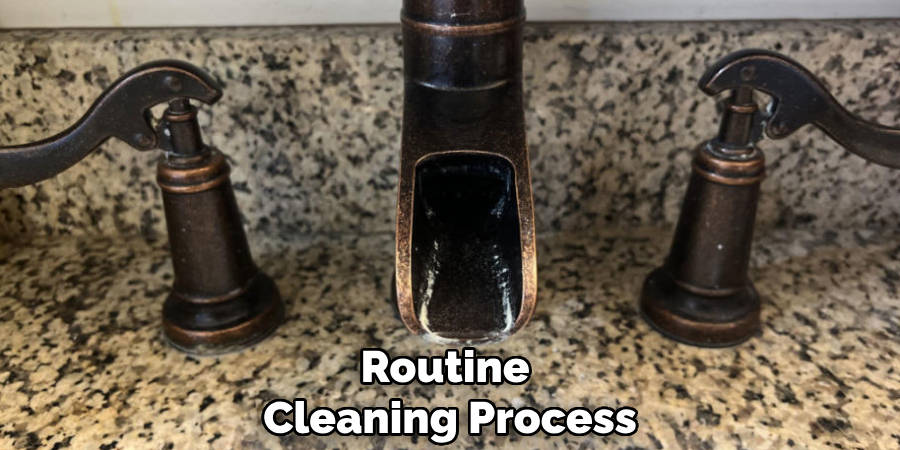
Step 2: Clean with Mild Soap Solution
Prepare a cleaning solution by mixing a few drops of mild dish soap in a bowl of warm water. Dampen a soft microfiber cloth with the soapy solution, and gently wipe the bronze surface to remove any grime or fingerprints. For tight spots or intricate details, use a soft-bristled toothbrush dipped in the solution to clean thoroughly without damaging the finish.
Step 3: Rinse and Dry
To remove any soap residue, wipe the surface with a clean, damp cloth. Immediately after rinsing, use a separate soft microfiber cloth to dry the fixture entirely. This step is crucial to prevent water spots or streaks, ensuring your bronze maintains its polished, elegant appearance.
Removing Tough Spots and Stains
Even with regular maintenance, tough spots and stains might occasionally appear on your bronze fixtures. Here’s how you can safely and effectively address them:
Step 1: Make a Baking Soda Paste
Create a gentle yet effective cleaning paste by mixing baking soda with a small amount of water. Aim for a thick but spreadable consistency, similar to toothpaste. Baking soda is mild yet powerful, making it ideal for treating stubborn stains without damaging the surface.
Step 2: Apply Gently
Using a soft cloth or a toothbrush, dab the baking soda paste directly onto the tough spots or stains. To clean the area, use light, circular motions and avoid applying heavy pressure, as this could damage the bronze’s protective finish. Take your time to work the paste over the stains, allowing it to lift the buildup gradually.
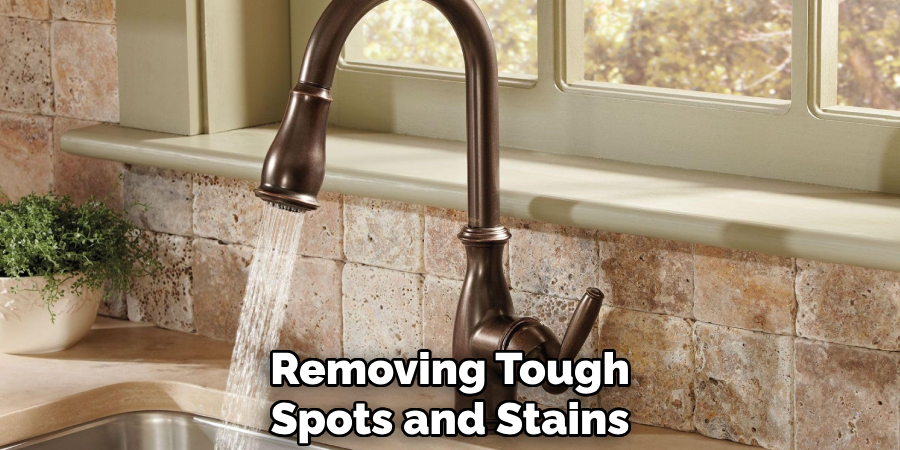
Step 3: Rinse and Dry
Once the stains have been treated, carefully wipe the surface clean with a cloth dampened in warm water. Be thorough to ensure all remnants of the baking soda paste are removed. After rinsing, dry the fixture immediately with a soft microfiber cloth to prevent water spots or streaks. Following this process will help restore your bronze to its original luster while maintaining its elegant and timeless appearance.
Polishing and Protecting Bronze Fixtures
Proper polishing and protecting are crucial to maintaining the beauty and longevity of bronze fixtures. Follow these steps to ensure your bronze remains radiant and well-protected:
Step 1: Apply Olive Oil or Bronze Wax
Start by applying a small amount of olive oil or a specialized bronze wax to the fixture’s surface. These products work to nourish the bronze and act as a protective barrier against tarnish, fingerprints, and other everyday wear.
Step 2: Buffing the Surface
Once the oil or wax has been applied, use a clean, dry cloth to buff the surface of the fixture gently. This process enhances the natural shine of the bronze, creating a smooth and even finish. Be thorough yet gentle, ensuring all areas are polished without causing scratches or damage.
Step 3: Frequency of Polishing
For optimal maintenance, polish bronze fixtures once every 1–2 months. Regular polishing not only keeps the fixtures looking vibrant but also extends their lifespan by preventing the buildup of grime and corrosion. Keeping a consistent schedule ensures minimal effort while maintaining their pristine appearance.
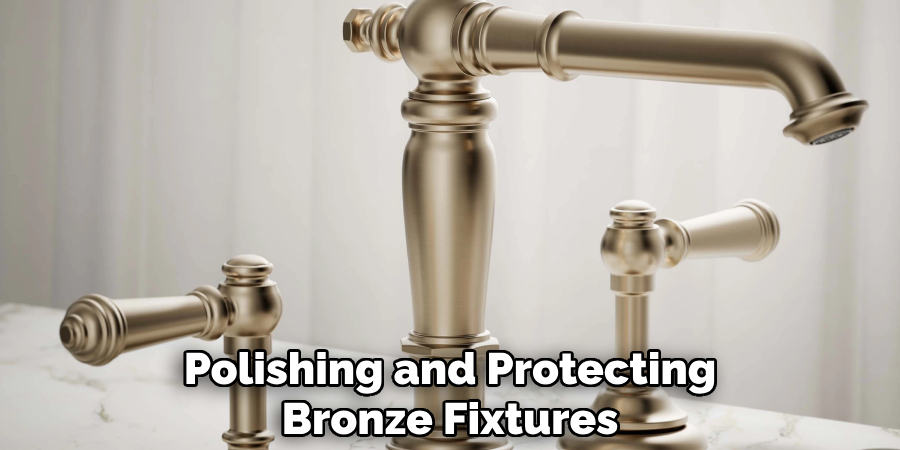
By incorporating these steps into your routine care, your bronze fixtures will continue to exude elegance and sophistication for years to come.
Dealing with Heavily Tarnished Bronze
Even with regular care, bronze fixtures may occasionally become heavily tarnished. Follow these steps to restore their original beauty.
Step 1: Commercial Bronze Cleaner
When home remedies fail to achieve the desired results, try a commercial bronze cleaner specifically designed to remove tough tarnish. These products are readily available and formulated to target stubborn grime and oxidation without damaging the underlying surface.
Step 2: Follow Product Instructions Carefully
Always read and adhere to the manufacturer’s instructions when using a commercial cleaner. Apply the product with a soft cloth or a non-abrasive pad, working gently to avoid scratching the surface or stripping away the protective patina that contributes to the bronze’s natural charm.
Alternative Option: Re-Oiling the Bronze
After completing a deep cleaning with a commercial product, consider reapplying an oil-rubbed finish to the fixture. This step helps enhance the bronze’s sheen while offering an additional layer of protection.
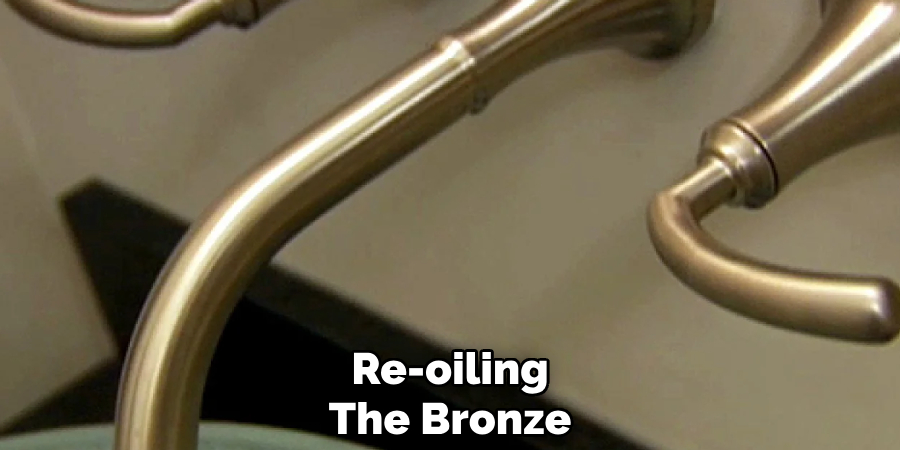
Use a high-quality oil, such as mineral oil or a specialty product designed for bronze, and buff it into the surface with a clean, soft cloth. This not only restores the fixture’s original appearance but also prolongs its longevity.
Conclusion
Regular gentle cleaning is essential for preserving the beauty of bronze faucets and preventing unnecessary damage. By understanding how to clean bronze faucet fixtures, you can ensure they retain their stunning appearance and functionality over time.
Always prioritize using mild cleaning solutions and soft cloths to avoid scratches or discoloration caused by harsh chemicals. Consistent maintenance, including occasional re-oiling for added protection, will keep your bronze faucet fixtures shining bright. With these simple steps, your faucets can remain a timeless and elegant focal point in your kitchen or bathroom for many years to come.

